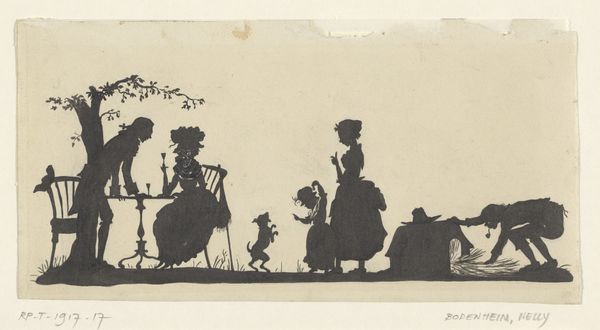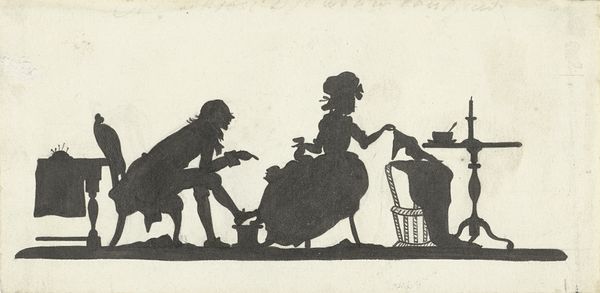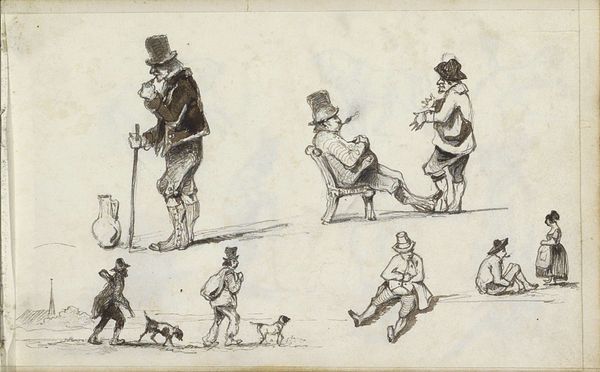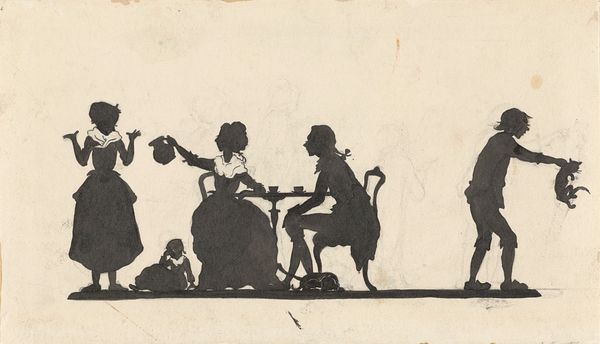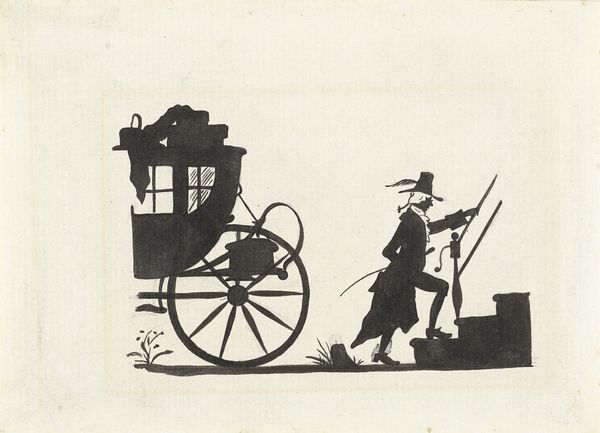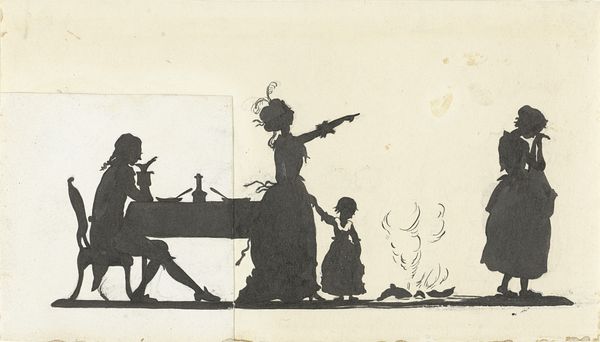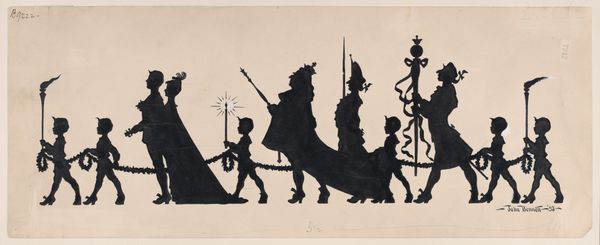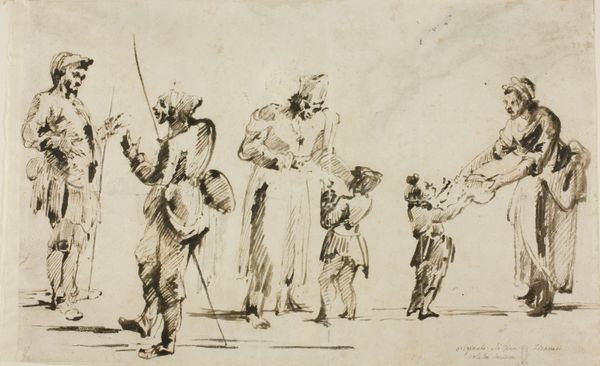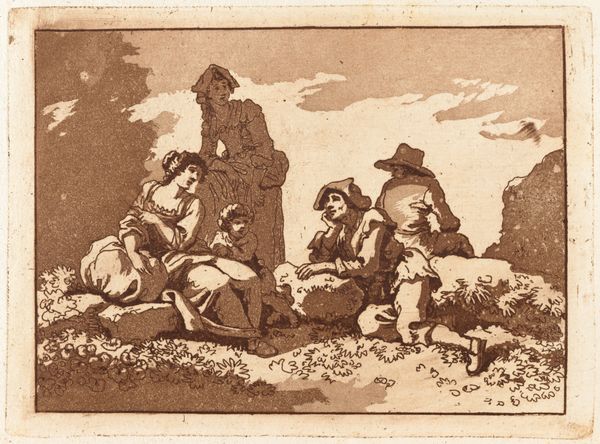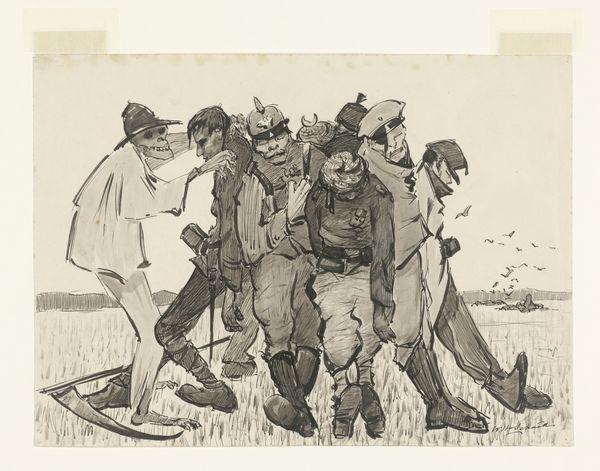
Ontwerp voor illustratie voor In Holland staat een huis: silhouet van de familie met de hond en de kat 1884 - 1917
0:00
0:00
nellybodenheim
Rijksmuseum
drawing, paper, ink
#
portrait
#
drawing
#
blue ink drawing
#
figuration
#
paper
#
ink
#
line
Dimensions: height 108 mm, width 193 mm
Copyright: Rijks Museum: Open Domain
Editor: This drawing, titled "Ontwerp voor illustratie voor In Holland staat een huis: silhouet van de familie met de hond en de kat," is attributed to Nelly Bodenheim and was likely created between 1884 and 1917. The figures are rendered in ink on paper in a silhouette style, creating a stark contrast. It feels… nostalgic, almost like looking into a lost world. What do you see in this piece? Curator: This silhouette evokes for me the ways in which ideas of "family" have been both idealized and weaponized throughout history. Think about the traditional family structure depicted – who is included, who is excluded? Whose stories are prioritized and whose are erased within this representation of domesticity? Does the artwork perpetuate a specific class or gender expectation? Editor: So, you’re suggesting that this seemingly simple depiction carries loaded implications? Curator: Absolutely. Consider the position of women and children in the domestic sphere during the time it was created. Silhouette art, especially family portraits, often functioned as symbols of status, but also of control. The very act of rendering figures as empty shapes suggests an absence of individual agency, which invites critical readings based on gender roles and power dynamics. Is there any visual detail that supports or challenges the status quo? Editor: It is difficult to distinguish between different social standings, since there aren't many unique identifiers in the silhouette style used by the artist. This style arguably does little to disturb historical narratives on family. Curator: Exactly. This piece encourages us to examine those historical narratives and the visual language used to reinforce them. How can this inform the viewers of today? Editor: I see your point. It’s a reminder that even seemingly innocent depictions of family life can reflect complex social and political realities. Curator: And perhaps help us to think more critically about the representation of family in contemporary art and culture.
Comments
No comments
Be the first to comment and join the conversation on the ultimate creative platform.
